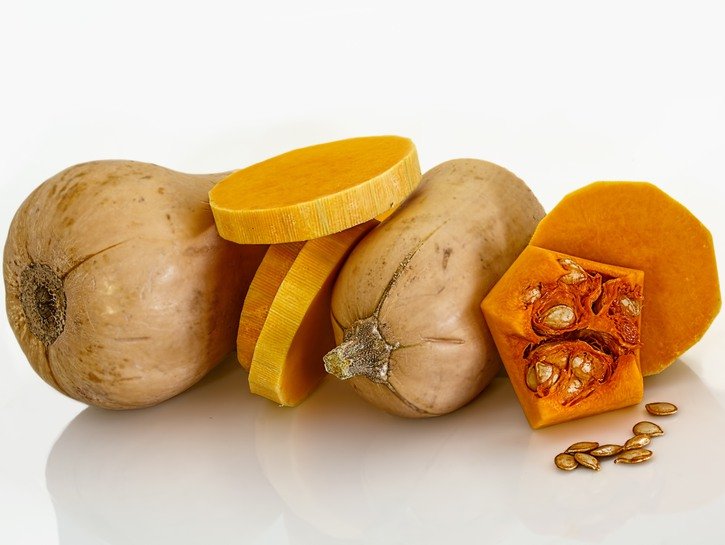It’s no secret that squash is an ingredient that truly shines in the kitchen this time of year. Enter one of our favorite varieties, butternut squash. We’ll use this lovely item in an unexpected way, in butternut squash mac and cheese. This stunning seasonal take on a classic comfort food will surely knock your socks off! Stay tuned for our recipe, then some helpful variations. Hello, gourd-geous!
Butternut Squash Mac And Cheese
Recipe
Ingredients
- 1 medium butternut squash
- 1 tablespoon olive oil
- pink sea salt
- pepper
- 8 ounce box of conchiglie (shells)
- 1 ½ cups milk
- 1 cup heavy cream
- 2 tablespoons butter
- 2 tablespoons flour
- 1/4 teaspoon ground nutmeg
- 1 tablespoon fresh chopped sage, plus extra for garnish
- 2 cups sharp cheddar cheese, shredded
- hunk of parmesan cheese
Supplies
- large pot
- measuring cups
- wooden spoon
- colander
- cheese grater
- Chef’s knife
- cutting board
- food processor or blender
- no stick spray
- whisk
- large skillet
- baking sheet
- 9 x 13 glass baking dish
Directions
Begin by preheating oven to 400 degrees. Then, carefully cut butternut squash (see notes section for extra help). Peel, seed, and cube it as well. You’ll only need half, so set aside the rest (or puree and freeze for soup base or other recipe fun).
On large baking sheet, add squash chunks then drizzle with the olive oil. Toss lightly and sprinkle with pink salt and pepper. Roast for 25-30 minutes, flipping halfway through.
Meanwhile, as squash cooks, prepare pasta according to package directions. Once completed, drain and set aside. Do not rinse pasta, ever.
Carefully remove butternut squash from oven. Then, add it to food processor or blender and puree until texture is smooth. Add ½ cup milk and puree again until smooth to thin out your sauce.
Next, heat large skillet over medium heat. Once warm, add butter until it melts, then whisk flour and nutmeg into it. Whisk constantly for the next couple of minutes until mixture is fragrant.
Then, add cream and remainder of milk and continue whisking until smooth and silky. At that point, while still whisking, increase heat to high and bring to a boil. Once your concoction starts to thicken, lower heat to low setting and add butternut squash puree and fresh sage. At this time, add cooked noodles and another pinch of salt and pepper. Stir to combine.
Next, spray non-stick spray onto 9 x 13 glass baking dish. Pour 1/3 of the noodle mixture into the dish, sprinkle with cheddar, and repeat twice more until all the noodles and all the cheese are in the dish. Bake for 20-30 minutes until it’s bubbling slightly. Freshly grate about 1/3 cup of parmesan cheese over the top, then allow dish to rest for about 5 minutes until cheese melts slightly. Garnish with fresh sage leaf and serve and enjoy!
Recipe Notes
For full explanation and helpful tips on cutting a butternut squash, check here.
If sauce won’t thicken to your liking, you may slowly add up to one additional tablespoon of flour.
Variations

Now that we’ve successfully crafted this delicious base recipe, let’s discuss some helpful variations:
- For a quicker weeknight dinner, consider substituting butternut squash puree instead of the fresh squash. This allows for the cook to skip the roasting step and jump into the stovetop steps to save time. Plus, you won’t have to wrestle with the challenge of cutting the squash.
- To add an additional textural element, consider the addition of breadcrumbs on top of the 9 x 13 dish. Between ½ and ¾ cup would suffice. Whole wheat bread crumbs would be a healthier choice, or panko bread crumbs present a more classic option.
- You can also play around with types of pasta. While we prefer the shells or conchiglie, other options with ridges would work too, like penne or rigatoni; the ridges will “grab” the sauce so we love to use pasta with that element. Classic elbow macaroni is another option.
- For a lighter version, use less butter and substitute milk for the heavy cream. ½ cup less cheddar could also be an option for a lower calorie dish. Whole wheat pasta, lentil pasta, or chickpea pasta could help to provide a nutritional boost too, but the texture will likely be a bit different than regular pasta. For gluten-free eaters, GF pasta and flour can be substituted.
We hope you enjoyed our squash-tastic twist on classic mac and cheese. It’s about to become a heavy hitter in your culinary rotation with our base recipe and countless tips for variations to your taste.
